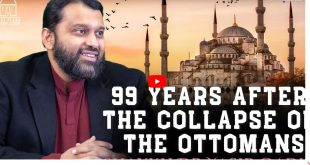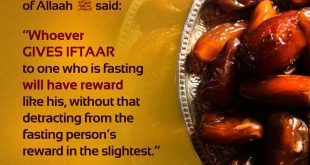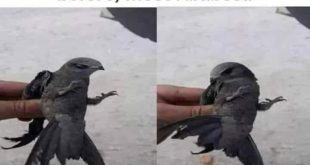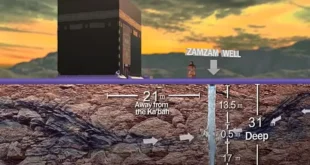Journey of the Midnight Sun Mosque from Nilufer Rahman on Vimeo.
In Islam, much depends on the sun.
The devout offer a prayer at sunrise and another at sunset.
Simple enough in most of the Muslim world. But a little tricky in Yellowknife, land of the midnight sun, noontime dim and North America's northernmost mosque.
At this time of year, the capital of the Northwest Territories is closing in on nearly 24-hour darkness, when a sliver of sun bumps into view for a few brief hours a day. To squeeze a few more hours into their five-times-a-day prayer regimen, local Muslims have adopted Edmonton's prayer schedule.
"You will be doing a sunrise prayer while it is still pitch-black out," says Summayah Petrus, 24, an engineer who spent her first winter north of 60 last year. "Or in the summer, a sunset prayer at 9 o'clock – four hours before the actual sunset! It is definitely a little weird."
That's just one of the quirks of being Muslim in this booming frontier city of about 20,000, where a little mosque on the edge of the Arctic has become a crowded hub for the Muslim faith.
Since 2001, Yellowknife's total population has grown by more than 13 per cent, making it Canada's fastest-growing capital. Many of those newcomers are immigrants who are finding the country's small cities increasingly attractive, according to census data released yesterday. While Montreal, Toronto and Vancouver remain the top destinations for immigrants, smaller cities like London, Winnipeg and, yes, even Yellowknife are drawing an increasing share.
Yellowknife picked up 510 new immigrants between 2001 and 2006 – paltry compared to major urban areas, but notable compared to the mere 290 who headed to Whitehorse, that other territorial capital of around 20,000 people.
A recent city survey found more than 110 ethnicities living within Yellowknife.
With that influx has come a hash of cultures, nationalities and denominations.
Most are after a share of new oil, gas and mineral wealth flowing through a city that calls itself the Diamond Capital of North America."We're a mini-United Nations," Mayor Gordon Van Tighem says.
The clearest illustration of this blooming multiculturalism appears every day around noon outside a narrow, wooden building on the edge of the city's Old Town. At Dhuhr, the Muslim midday prayer, white taxicabs swarm around the little mosque, and the parking lot erupts with kufi caps and robes of all colours.
Just seven years ago, Yellowknife's Muslims had to pray at a library. A group of locals eventually converted an old daycare centre into the Islamic Centre of Yellowknife. Today, it's overflowing; on a recent weekday, one supplicant offered prayers in the cloakroom outside the crowded prayer hall.
"Ten years ago, people didn't really notice many Muslims here," says Fadil Memedi, a gruff cabbie who's lived in the city for 12 years. "Now we number over 100. We're not such a tiny part of Yellowknife any more."
The actual number is probably much higher. In 2001, Statistics Canada recorded 130 Muslims in Yellowknife. It hasn't released religion figures from its 2006 census yet, but the number of Muslims is likely to have eclipsed 150 given recent population trends.
They come from Lebanon, Sudan, Somalia, Macedonia, and arrive in Yellowknife for jobs. The city has openings aplenty, and the pay tends to be higher than down south. For anyone burdened with heavy immigration expenses, a stint in Yellowknife is a good way to pay it off.
"The jobs are everywhere" says Yousry Abdel Mejid, head of the mosque. "Talk to anyone on the plane ride here and you'll probably have a job by the time you land. You stay six months; you pay your debts."
That type of draw presents a few quandaries: a lack of single Muslim women, for one. The 2001 census showed that Muslim men outnumber Muslim women in Yellowknife three to two.
"It's a problem," said Mr. Abdel Mejid. "If I didn't have a family, I probably wouldn't move here."
Ms. Petrus noticed the gender imbalance soon after moving to Yellowknife last year.
Scores of single Muslim men drive cabs here. When they got wind that an eligible Muslim woman had come to town, "I was being offered a ride every time I stepped out the door," she says.
"It's a little weird in the Muslim community for a woman to be away from home and not married. People were always coming up to me wanting to know the reason why I hadn't married yet."
Ms. Petrus has since moved south to Kelowna, B.C., but would return to Yellowknife if the right job opened up.
For its part, the community has done its best to balance genders. Mosque-goers have pooled up to $10,000 at a time to help local Muslim men bring fiancées from the Middle East to Canada.
Upon arriving in Yellowknife, these newcomers might have a few difficulties acclimatizing. In addition to the unusual prayer schedule, there's also the cold and the limited variety of halal food.
The geographic hardships can make for equivalent spiritual ones. To shore up faith around town, the mosque recently brought in an Egyptian Imam for a six-month stint.
Most eventually warm to the city. "I was surprised that nobody in Yellowknife ever bothered me about my head scarf," says Ms. Petrus, who grew up in Montreal. "In Quebec people will say, 'Go back to where you came from.' "
Not that Yellowknife is entirely immune to bigotry. After the 9/11 attacks, vandals tore down the mosque's sign. A few months earlier, someone smashed a window.
"There were some challenges," Mayor Van Tighem admits. "But the very next week [after 9/11] our churches were preaching tolerance from the pulpit. As a general rule, we are a community that accepts and receives people from all faiths."
Most Muslims in the city would agree. They've brought together other faiths in several religious forums over the years and encourage one another to support local charities.
"In a big city, it's much easier to become isolated in your religious community and not consider the outside world," says Mr. Abdel Mejid. "This is such a small community that you have to be a part of it. We have to engage with other religions. I know it's not the Islam way, but it's good for me and good for my religion."
 Sri lanka Muslims Web Portal Diversity and Inclusiveness
Sri lanka Muslims Web Portal Diversity and Inclusiveness



